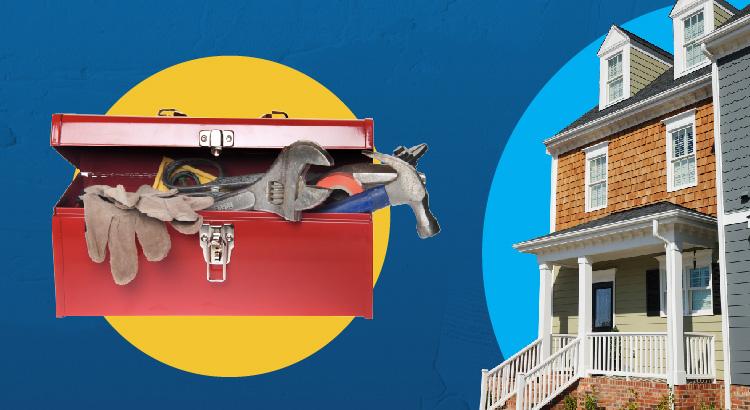Selling a house with problems? No worries! We’ve got you covered. Selling a house in poor condition can be challenging, but with the help of The MLSonline, it’s not impossible. Whether your property is in fair condition or needs some home improvement projects, there are strategies to attract potential buyers and get the deal done.
Navigating the real estate market with a house in poor condition may seem daunting, but we’ll show you how to make it work. Discover the secrets to selling as-is to a cash buyer and find out why this simple sale option can be viable for homeowners like yourself. Learn how to determine the sales price based on your repair needs.
Exploring Options for Selling a Home in Bad Condition
Selling a house with repair needs and structural issues can be challenging, but it doesn’t mean that you’re out of options. There are different avenues you can explore to sell your home, even if it’s in bad condition. Let’s take a closer look at some of these options and weigh their pros and cons based on your specific situation.
Traditional Market vs. Selling Directly to Investors
One option for selling your property is to list it on the traditional real estate market. This involves hiring a real estate agent who will help you market the property and find potential buyers. However, selling through the traditional market may not be ideal for homes in bad condition as they tend to attract more discerning buyers looking for move-in-ready properties. Additionally, listing your property for sale can attract the attention of investors who may be interested in purchasing it. It’s important to consider the mortgage and price factors when determining the best course of action for selling your home.
On the other hand, selling directly to real estate investors might be a viable alternative for home sellers. Real estate investors specialize in purchasing properties regardless of their condition and often have the resources to handle repairs or renovations themselves. This option may result in a lower sale price compared to listing on the traditional market, but it offers convenience and a quicker turnaround time for buyers and agents.
Research Local Real Estate Agents Specializing in Properties with Problems
If you decide to go the traditional route, it’s crucial to find a real estate agent who has experience selling houses with structural issues. These agents understand the challenges associated with marketing homes in bad condition and can help you navigate through them effectively, whether you are an investor, buyer, or looking for a sale.
When researching local real estate agents, consider asking them about their track record with similar properties and how they plan to market your home despite its condition. Look for someone who has successfully sold houses in bad shape before and has strategies tailored specifically for such situations. This will ensure that you find an agent who can help you get the best selling price for your home, attract potential buyers, and even catch the attention of investors.
Alternative Methods: Auctions or Online Platforms for Distressed Homes
In addition to listing on the traditional market or working with real estate investors, there are alternative methods worth exploring when selling a house in bad condition. Two popular options for selling a house in bad condition are home inspection auctions and online platforms specializing in distressed properties. These methods can help attract potential buyers and ensure a fair price for the property.
Auctions provide a platform where potential buyers bid on the home, often resulting in a quick sale. This method can be advantageous if you’re looking for a swift transaction with the agent, but keep in mind that the final sale price may vary depending on the demand and the current condition of the property.
Online platforms dedicated to distressed homes connect sellers with investors or buyers interested in purchasing properties with problems. These platforms offer convenience and wider exposure for your property, potentially attracting more interested parties who are specifically looking for houses in bad condition. This can help you find a buyer quickly and potentially increase your selling price. Working with a real estate agent who specializes in distressed properties can also be beneficial in navigating these platforms and maximizing your chances of a successful sale.
Determining the Severity of Structural Problems
One of the crucial aspects to consider when selling a home is the severity of any structural issues. It is essential to evaluate whether these problems are merely cosmetic or if they pose significant risks to potential buyers’ safety, especially if the home is in poor condition. By understanding the severity, you can make informed decisions and take appropriate actions during the selling process.
To accurately assess the extent of damage and potential repair costs to your home in poor condition, it is advisable to consult with professionals specializing in structural problems. These experts have the knowledge and experience to identify underlying issues that may not be immediately visible. They can thoroughly inspect your property’s foundation, walls, roof, and other critical areas to determine whether major problems exist.
In situations where you encounter home foundation problems or other structural issues, obtaining multiple opinions from home experts is highly recommended. Different home professionals may have varying perspectives or approaches when evaluating your property’s condition. Seeking multiple assessments helps ensure that you receive accurate information about the severity of the home problem and its potential impact on home buyers.
Expert Tips for Selling a House with Structural Problems
Selling a home in poor condition with structural problems can be challenging, but with the right approach and the help of a real estate agent, you can still attract potential buyers. Here are some expert tips to help you navigate this process successfully.
1. Seek Advice from Professionals
Before listing your home, it’s crucial to seek advice from professionals such as contractors or structural engineers who specialize in assessing structural issues. Their expertise will help you understand the severity of any problems and determine if any repairs or renovations are necessary before selling. This is particularly important for buyers, as a home in poor condition may deter potential buyers.
2. Market Unique Features Appealing to Buyers
While structural problems may deter some buyers, others may see an opportunity to create their dream home. To attract these types of buyers, it’s essential to market your property’s unique features that make it appealing despite its poor condition. Highlight any architectural details, spacious layouts, or potential for customization that could capture their interest. Additionally, working with a knowledgeable agent can help navigate the challenges of selling a property in poor condition.
3. Provide Documentation of Past Repairs
One way to instill confidence in potential home buyers is by providing documentation of past repairs or renovations completed by reputable contractors. This documentation serves as evidence that the home’s poor condition has been addressed professionally and can alleviate concerns about recurring problems. Buyers will appreciate knowing that qualified professionals, such as an agent, have previously worked on the property.
4. Disclose Ongoing Maintenance Plans
Transparency is key when selling a home with structural problems. Be upfront about any ongoing maintenance plans or recommendations provided by experts. This demonstrates your commitment to addressing the poor condition of the property proactively and ensuring that potential buyers are well informed about what they might need to address after purchasing the home.
So, if you’re considering selling a home in poor condition with structural problems, don’t be discouraged. Embrace the opportunity to showcase its potential and attract buyers who are up for the challenge. With proper planning and transparency, you can successfully sell your property while ensuring that both you and the buyer are satisfied with the outcome.
Now that you have expert tips for selling a home in poor condition at hand, it’s time to put them into action and embark on this exciting journey!
Investing in Upgrades and Major Repairs for Sale
Investing in home upgrades and major repairs can significantly increase its market value. By strategically evaluating which home repairs or upgrades will yield the highest return on investment (ROI), you can attract potential home buyers and secure a better sale price.
Prioritize Essential Repairs
Before considering any upgrades or cosmetic changes to your home, it’s crucial to address major repairs that may deter potential buyers if left unaddressed. Start by thoroughly inspecting your property to identify any home issues that require immediate attention. Common essential repairs include fixing structural damage, electrical or plumbing problems in the home, or addressing issues with the roof or foundation of your home.
By prioritizing these essential repairs upfront, you create a solid foundation for attracting buyers who are looking for move-in-ready homes. Neglecting these critical repair needs could make potential buyers hesitant about making an offer or result in them negotiating for a lower purchase price.
Research Cost-Effective Upgrades
In addition to essential home repairs, consider researching cost-effective home upgrades that can enhance the overall appeal of your property without breaking the bank. Some popular home options include
- Upgrading kitchen appliances to energy-efficient models adds value to your home and appeals to environmentally conscious buyers.
- Updated flooring options: Installing new flooring can instantly transform the look and feel of a home. Consider options like hardwood floors, laminate flooring, or modern tiles.
- A fresh coat of paint throughout the home can give it a clean and updated appearance.
- Curb appeal enhancements: Improving your home’s exterior by adding landscaping features such as flower beds, outdoor lighting, or even repainting the front door can significantly impact first impressions.
Investing in these cost-effective home upgrades can make your property more attractive to potential home buyers while maximizing your return on investment.
Obtain Quotes from Reputable Contractors
Once you have identified the major repairs and upgrades needed for your home, obtaining quotes from reputable home contractors is essential. Reach out to multiple home contractors specializing in the required repairs or upgrades and compare their estimates. This step ensures that you have an accurate understanding of the home repair costs involved.
Obtaining multiple home quotes also allows you to negotiate better home deals with contractors, potentially saving you money in the home process. Remember to consider not only the cost but also the quality of home workmanship and the reputation of the home contractor when making your final home decision.
Factor Repair Costs into Asking Price
When determining the asking price for your home, it’s crucial to factor in the repair costs incurred for major home repairs or upgrades. Consider how much money you have invested in fixing a leaky roof, updating home appliances, or addressing other significant home issues. These home repair costs should be reflected in your asking price.
However, it’s important not to overestimate or underestimate these home repair costs. Overpricing may deter potential buyers, while underpricing could result in financial loss for you as a home seller. Research comparable properties in your area and consult with real estate professionals to determine a fair and competitive asking price that factors in both home repair costs and market value.
Addressing Cosmetic Repairs for Better Market Appeal
Addressing cosmetic repairs in poor condition can significantly improve its market appeal. While major repair needs like structural damage or a leaky roof in poor condition should be a priority, focusing on low-cost cosmetic fixes in poor condition can enhance your home’s overall appearance and attract potential buyers in poor condition.
- Focus on low-cost cosmetic improvements: Cosmetic fixes effectively give your home a fresh look without breaking the bank. Consider repainting walls in neutral tones to create a clean and inviting atmosphere. A fresh coat of paint can instantly transform the appearance of any room. Replacing outdated fixtures such as light switches, faucets, or cabinet handles can modernize the space and make it more appealing to buyers.
- Refresh landscaping: Curb appeal is crucial in attracting potential buyers. Take the time to spruce up your outdoor space by refreshing the landscaping. Trim overgrown bushes and trees, mow the lawn regularly, and plant colorful flowers or shrubs that add visual interest. Enhancing the exterior of your home will create a positive first impression for potential buyers.
- Clean and declutter: A cluttered or dirty house can turn off even the most interested buyers. Prioritize cleaning every nook and cranny of your property before listing it on the market. Deep clean carpets, scrub floors, dust surfaces, and ensure all rooms are spotless. Decluttering is equally important; remove personal items and excess furniture to create an open and spacious feel throughout the house.
- Professional staging or virtual staging techniques: To showcase your home’s potential to prospective buyers, consider hiring professional stagers or utilizing virtual staging techniques if you’re on a budget. Professional stagers have an eye for design and can arrange furniture and decor in a way that maximizes the space and highlights its best features. Virtual staging, on the other hand, uses computer-generated images to digitally furnish and decorate empty rooms, giving buyers a visual representation of the home’s possibilities.
By addressing cosmetic repairs, you can significantly improve your chances of selling a house with problems. Focus on low-cost improvements such as repainting walls, replacing outdated fixtures, or refreshing landscaping. Cleanliness and decluttering are crucial to creating an inviting atmosphere for potential buyers. Consider enlisting professional stagers or utilizing virtual staging techniques to showcase your home’s potential. With these strategies in place, you’ll be well on your way to attracting interested buyers and selling your house successfully.
Disclosing Structural Problems to Potential Buyers
When selling a home with structural problems, it is crucial to provide full disclosure of all known issues to potential buyers. Not only does this ensure compliance with legal requirements, but it also promotes transparency and builds trust between the seller and buyer.
One important aspect of disclosing structural problems in a home is detailing any past repairs that have been made. By providing relevant documentation, such as receipts or contractor invoices, sellers can demonstrate their commitment to addressing these home issues. This level of transparency reassures home buyers that the necessary steps have been taken to rectify known defects in the home.
Educating buyers about ongoing maintenance needs associated with the property’s structural problems is essential. Sellers should clearly communicate the regular upkeep required to prevent further deterioration or complications. This includes explaining the specific tasks involved, such as regular inspections or maintenance checks.
To assist potential buyers in making informed decisions, sellers can offer resources such as inspection reports or expert opinions. Sharing inspection reports allows buyers to gain a comprehensive understanding of the property’s condition and any existing issues. Furthermore, providing access to expert opinions from qualified professionals helps validate the seriousness of disclosed structural problems.
In order to effectively disclose structural problems, sellers should be aware of specific disclosure requirements mandated by local laws and regulations. These requirements may vary depending on the jurisdiction and must be adhered to strictly. Failing to comply with these guidelines can lead to legal repercussions for sellers and potentially damage their reputation in the real estate market.
While disclosing structural problems is important, it is equally crucial for sellers not to exaggerate or understate these issues. Honesty is key when discussing known defects or issues with potential buyers. Being forthright about minor concerns and significant structural problems ensures that buyers are fully informed before purchasing.
Highlighting Positive Aspects of the Property
It’s crucial to highlight the property’s positive aspects to attract potential buyers. By emphasizing unique selling points and showcasing recent upgrades or renovations, you can offset any issues. Let’s explore some effective strategies for highlighting the positive aspects of a property.
Emphasize Unique Selling Points
While your property may have some problems, it likely possesses several unique features that can capture buyers’ attention. One way to do this is by focusing on its curb appeal. If your home is situated in an attractive neighborhood or has eye-catching architectural features, make sure to mention these in your listing. Highlighting these aspects can help potential buyers overlook any flaws and see the property’s true value.
Highlight Potential for Customization or Expansion
Appealing to buyers with specific needs is crucial when selling a house with problems. One way to do this is by highlighting the potential for customization or expansion. For example, if your property has ample space for future additions such as an extra bedroom, office space, or even outdoor entertainment areas like patios or decks, emphasize these possibilities in your listing. This allows potential buyers to envision how they can tailor the house according to their preferences and requirements.
Create a Compelling Narrative
To further enhance the appeal of a house with problems, create a compelling narrative around its history or its potential as a future investment opportunity. For instance, if your property has a rich historical background, share interesting anecdotes or stories that can captivate potential buyers. If the area surrounding the property is undergoing redevelopment or shows signs of growth, highlight this as an opportunity for future return on investment (ROI). By framing the property in a positive light, you can pique buyers’ interest and make them view it as more than just a house with problems.
Get Ready to Sell Your House
Successfully selling a house as-is can be a challenging task, but with the right approach and knowledge, it is definitely achievable. By understanding inspections and negotiations in selling, exploring options for selling a home in bad condition, and addressing both cosmetic repairs and structural problems, you can increase your chances of a successful sale. It’s also a good idea to seek advice from professionals like those at The MLSonline. Following these guidelines and getting the right guidance can increase your chances of achieving a successful sale.








